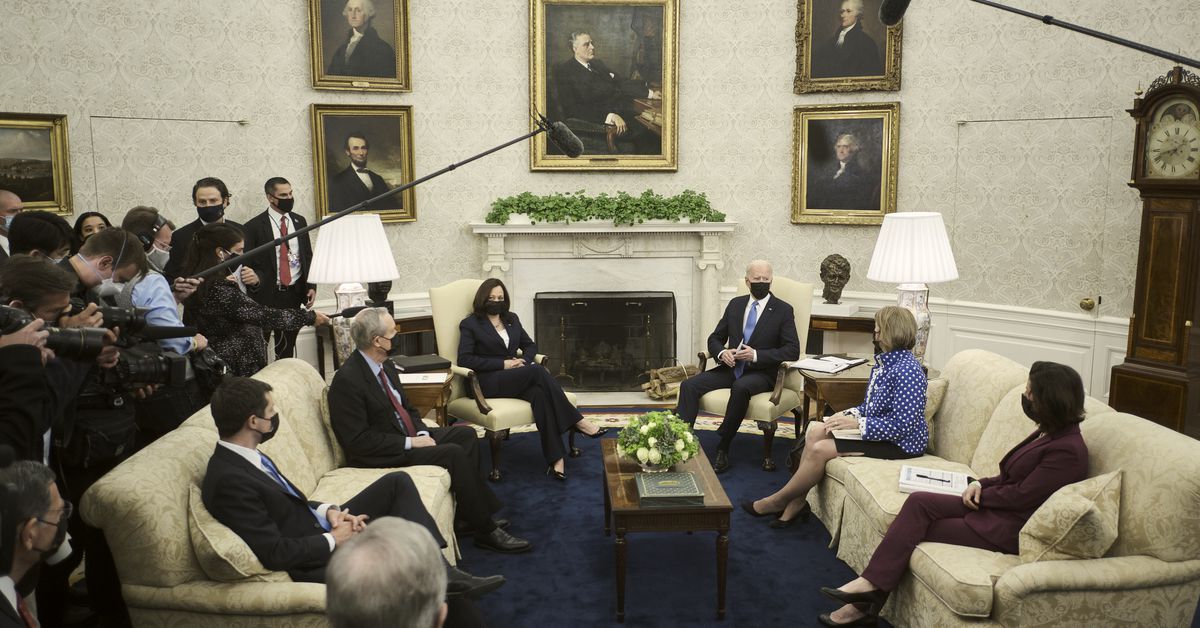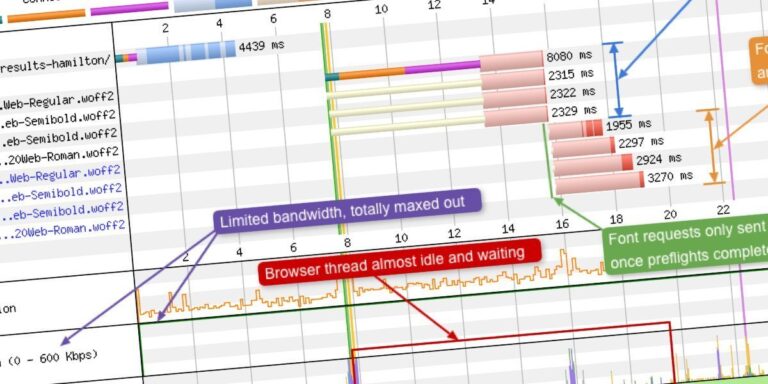
There’s a tense fight in Washington between Republicans and Democrats over President Biden’s infrastructure plan, from the amount of funding in it to the very definition of infrastructure. But on the question of addressing the internet and bridging the digital divide, there appears to be resounding agreement that broadband is very, very important and very, very bipartisan. This is a mirage.
Earlier this week, Vice President Kamala Harris met with members of Congress from both parties to hammer out the logistics of funding broadband through the infrastructure package, saying the subject is one Americans see as nonpartisan. Sen. Amy Klobuchar told local media in Minnesota that discussion was just focused on “nuts and bolts.”
While Republicans and the White House are still debating the cost of the overall infrastructure package, they have come to an agreement on how much the package should spend on broadband — $65 billion — after Biden agreed to compromise last week. The new figure represents a significant reduction from his original broadband proposal, which had a $100 billion price tag. White House press secretary Jen Psaki said the decision was “all in the spirit of finding common ground.” It appears the details are still being figured out.
But even though the parties have settled on a number, there isn’t a consensus on how broadband should actually work and who should be prioritized through federal efforts. Coming to an agreement on funding broadband is just one piece of the puzzle, and there are deep fault lines and disagreements over what that funding should aim to accomplish that could significantly impact who gets connected and who really benefits. Republicans and Democrats alike have said that the pandemic highlighted the internet’s crucial role in everyday life, but they have fundamental disagreements on the share of the pie that traditional cable providers should have.
One key disagreement is a long-simmering debate over the idea of municipal broadband. Throughout the United States, some local governments, nonprofits, and co-ops have made long-term investments to build their own broadband networks without relying on the private sector. Biden is a big fan of this approach. The White House calls these municipal broadband networks “providers with less pressure to turn profits and with a commitment to serving entire communities.” Notably, large cable companies that benefit from being the only provider in many areas don’t like this competition, and they have even lobbied for legislation banning them. Broadband Now, an internet provider website, says municipal broadband is now restricted in at least 18 states.
managed to build its own gigabit broadband network, despite opposition, including from the cable provider Comcast (Comcast is an investor in Vox Media, which owns Recode). Biden wants efforts like Chattanooga’s to be eligible for funding from his infrastructure plan.
But congressional Republicans are opposed, saying there are places where municipal hasn’t worked and has left taxpayers in debt, as the Senate’s Republican Policy Committee argued in a brief published earlier this month. Some House Republicans have even proposed national legislation limiting these kinds of networks. NCTA, a lobbying organization that represents a wide range of media and telecom companies, including Comcast, Charter, and Cox Communications, has said of Biden’s plan that “shared goals are not served by suggesting wrongly that the entire network is ailing and that the solution is either to prioritize government-owned networks or micromanage private networks.”
“The cable and telephone lobbyists for a long time have argued that this is socialism, that it is harming American businesses,” Christopher Mitchell, who directs the community broadband program at the Institute for Local Self-Reliance, told Recode. “The lobbyists who have wanted to stop broadband competition have recognized that the ideology of the Republican Party is one that is deeply skeptical of public investments.”
Public versus private investment is not, however, the only fault line in the recent bipartisan consensus over funding broadband. There’s also long and ongoing disagreement between Republicans and Democrats over what kind of technology should be deployed to facilitate these internet connections. Right now, many get their internet routed to their homes through coaxial cable networks, while some are still dependent on DSL-copper phone lines, which are even slower. Biden thinks that should change, and that US broadband should be high-speed and “future proof,” a term Republicans have interpreted as code for fiber. Fiber, advocates have argued, would last for decades and could be easily adjusted to account for higher and higher speed demands.
But Republicans have said that the Biden definition of high-speed and “future proof” would make too many households eligible for subsidies that could go to people who don’t necessarily need internet updates. They’ve also accused Democrats of trying to subsidize “faster speeds [that] allow more lavish internet uses,” like streaming content in 4K, which could close off innovation, putting their “thumb on the scale” by prioritizing one type of technology: fiber. Back in February, Republicans on the House Energy and Commerce Committee proposed a suite of 28 bills focused on deregulation, and during one March hearing, Rep. Bill Johnson (R-OH) called focusing on building up high-speed internet as the “exact opposite of what needs to happen,” and would leave rural Americans behind.
There are companies that are moving ahead with fiber on their own or that will need it in order to build out 5G networks. But legacy cable providers likely benefit if the government doesn’t prioritize this type of connection. (NCTA, the lobbying group, has argued, for instance, that federal money should focus instead on areas with very bad internet connectivity or none at all.) Traditional cable providers, who can be the only internet providers for some consumers, don’t necessarily want to have to compete with new options based on fiber, explains Ernesto Falcon, senior legislative counsel at the Electronic Frontier Foundation, pointing to companies like Comcast and Charter.
But Biden and those who support his plan say that focusing on these more advanced systems is important because demand for internet is only going to increase and that the country needs to invest in technology that can last for decades.
“This is a once-in-a-lifetime investment that we can make,” says Greg Guice, the government affairs director at Public Knowledge. “If you rely on some of these older technologies, like copper, then you simply can’t get the speed out of them that you need to really, as you think down the road, for the kinds of demands that are going to be on the network.”
Underlying the tensions between Republicans and Democrats are differing opinions on the scope of the challenge. Republicans and cable companies want to concentrate the broadband discussion on areas and communities that have very little connectivity at present. Moving to high-speed and fiber, they argue, shouldn’t be the focus. But Democrats, along with some Republicans, have said the country should have a higher standard for internet speeds. That approach, Guice explains, would lend more support for building out fiber, and also frame the broadband question in a way that includes suburban and urban communities where internet connection is lacking.
While the Federal Communications Commission has estimated that about 30 million Americans don’t have access to broadband, that doesn’t include the people who might technically have access to the internet but can’t afford it, a problem exacerbated in areas where there’s just one internet provider. There’s also the process that’s called “digital redlining,” where internet providers have left communities of color and lower-income communities with worse internet access.
It’s not clear whether these tensions will be resolved in this latest infrastructure debate. After all, the pandemic has made abundantly clear that being connected isn’t just about having internet access. It’s crucial to have internet that’s good enough to support multiple people using multiple devices at the same time, and who might need that connection to do anything from work to learn to attend a medical appointment. Advocates for future-proofing say fiber not only will last longer but acknowledges that demand for internet won’t decline or stay stagnant. It will only grow.
As Guice says, “Would we think it’s reasonable to add a dirt lane to I-95?”






